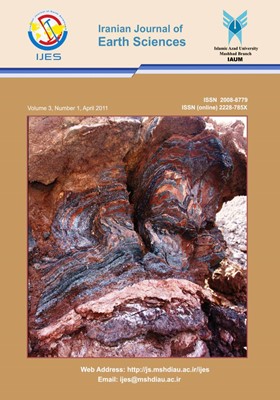Mafic Dykes of Moyar Shear Zone, North Kerala, India: Emplacement History and Petrogenetic interpretation based on Structure, Geochemistry and Magnetic Fabric
Subject Areas : MineralogyP. Pratheesh 1 , V. Prasannakumar 2 , K.R. Praveen 3
1 - Department of Geology, University of Kerala, Kariavattom Campus, Thriruvananthapuram, Kerala, India - 695 581,
2 - Department of Geology, University of Kerala, Kariavattom Campus, Thriruvananthapuram, Kerala, India - 695 581,
3 - Department of Geology, University of Kerala, Kariavattom Campus, Thriruvananthapuram, Kerala, India - 695 581,
Keywords:
Abstract :
Cretaceous mafic dykes in the Moyar Shear Zone (MSZ) area, north Kerala, India, provide signatures to probe into the nature of their source and thereby the evolution of the Mesozoic lithospheric mantle beneath the South Indian Granulite Terrain (SIGT). Bulk of the dykes in northern parts of Kerala is broadly in spatial association with the shear system. Mafic dykes striking NE-SW, NWSE, NNW-SSE and ENE-WSW are widespread in the MSZ and surrounding areas. Width of these dykes varies from 30cm to 5m in general, while dykes wider than 10m also occur. These mafic dykes are olivine/quartz normative tholeiites showing strong correlation to N-Type MORB and within plate basalt affinity. Anisotropy of Magnetic Susceptibility (AMS) data imply normal magnetic fabrics nearly parallel to dyke trends, but with highly variable plunge of magnetic lineation. The compositions of the least altered and least metamorphosed dykes help to define the properties of their mantle source region, as well as the nature of the crust through which the magma traveled. The present contribution on the mafic dyke swarms in Moyar Shear Zone (MSZ) provides new interpretations on the temporal relations of magmatism and tectono-metamorphic evolution of the south Indian high grade terrain.


